If you’re visiting Mexico City for the first time, the obvious place to begin your trip is in the Centro Historico, where you can see a great many touristic sites that reflect much of the city’s Aztec and Spanish pasts as well as the energy and traditions of present day Mexico City.
The sites in the Centro Historico are plentiful, are varied, and are honestly fantastic things to see. Museums like that of the Templo Mayor are absolutely wonderful, food is available on any budget, you can see live mariachi bands every single night of the week at Plaza Garibaldi, and the sites are in relatively close proximity to one another which makes them fairly easy to visit on foot or by short metro or taxi rides.
A visit to the Centro Historico can be a very full and somewhat exhausting one-day visit, or a more relaxed two days, depending on how much time you care to allocate to your visit. My recommendation: don’t skip this area of Mexico City.
I spent a week visiting Mexico City in late 2012. The below will detail my one-day visit to the Centro Historico, starting in the Zócalo.
I’ll refer to Mexico City as “DF” for the remainder of the post, which stands for “Distrito Federal” and is pronounced in (American English) phonetics as “day-effay”.
One Day in the Centro Historico – What to See
The below was my one-day route through the Centro Historico. I believe this to be a realistic itinerary for a long day in the city center. It can be done entirely on foot if you don’t mind walking a bit. From the time of arrival in the Centro to the time of departure, I spent approximately eleven hours on the below itinerary (I tend to move a bit slowly – you can probably go faster!).
- Begin at the massive central square of DF – the Zócalo, also known as the Plaza de Constitucion.
- Explore the ancient pre-Columbian high temple of the Aztecs, the Templo Mayor, and save some time for the well-designed and very interesting Museo del Templo Mayor.
- Make a stop into the Catedral Metropolitana de la Ciudad de México (Mexico City’s Cathedral), bordering the Zócalo to the immediate north. For an additional fee, climb to the roof for an overhead view of the square.
- View Diego Rivera’s massive murals depicting Mexican history, and take in a free art exhibition at the Palacio Nacional.
- Get a higher viewpoint of Mexico City from the Torre Latinoamerica skyscraper. (Note: I didn’t make it here myself)
- Binge on fine art at the nearby Palacio de Bellas Artes. (Note: this was closed by the time I got there, so I haven’t visited Bellas Artes either – but you should consider it!)
- End the day at Plaza Garibaldi, the lively beating heart of mariachi music in DF.
- Grab dinner at an area restaurant. I ate at Hosteria de Santo Domingo, an old restaurant southeast of Plaza Garibaldi.
Click on the numbered map markers for more info on each place, via Google Maps. Rough walking directions can be accessed via clicking on the top left icon, in the menu.
My Day in the Centro Historico
I started my day at my hostel in the La Condesa neighborhood. I hopped the metro at the Patriotismo metro station in La Condesa and set coordinates for the Zócalo metro stop, situated on the blue line. This required only one change. The metro in Mexico City is super convenient – use it!
Stop #1: El Zócalo.
Zócalo, translated from Spanish to English, means “base”, which refers to a never-completed monument to Mexican independence that was to be erected on the square. Only the base was ever built, which has long since been removed. The name Zócalo lives on in common usage (and on metro signage) regardless of the official name of the space, Plaza de la Constitución.
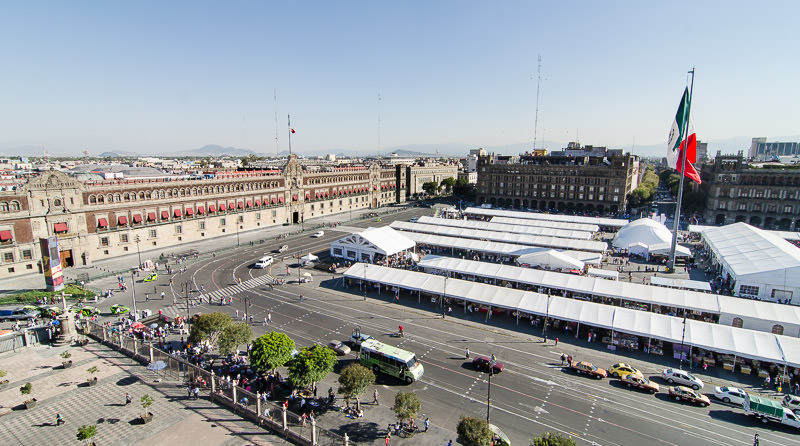
The Zócalo was covered in white tents at the time of visiting, which housed a book fair of sorts. Friends related that these temporary structures were put in place primarily in an effort to displace public protests. Public protest still went on, though – just around the streets of the square instead of in its center.
This massive public gathering space, at 240m x 240m, has been the center of DF since its Mexica/Aztec beginnings when the city went by another name – Tenochtitlan.
Spanish conquistadors led by Hernan Cortés, captured Tenochtitlan in 1521 and razed the Aztec temple and structures surrounding the Zócalo to the ground, re-purposing the stones to pave the square and build the massive Cathedral. If you look closely at the buildings surrounding the Zócalo, you’ll find that certain cornerstones of colonial buildings still contain Aztec carvings.
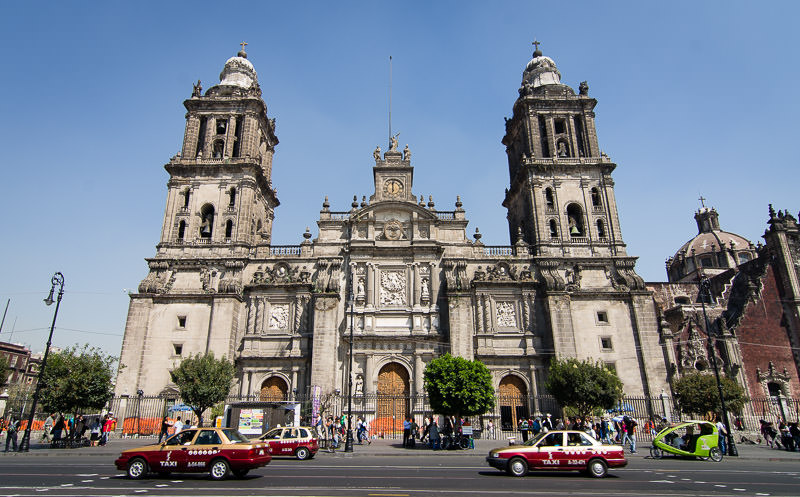
Mexico City’s Cathedral, just north of the Zocalo.
The conquistadors did a fairly good job of trying to destroy and erase the unfamiliar culture they encountered – such a good job, in fact, that the location of the high temple of Tenochtitlan, or Templo Mayor, was unknown until the early 20th century – even though the temple lay to the immediate northeast of the square, almost begging to be unearthed and explored.
Even after early archeological finds in the 1920s and 1930s, concentrated excavation/conservation efforts weren’t made until decades later. In 1978, Mexico City’s electric company was digging in on the temple grounds and made a major find that would inspire renewed public interest in the temple.
Proper, concentrated excavation and conservation efforts of the area didn’t begin until 1978 when the electric company was excavating through the area. Their first major find:
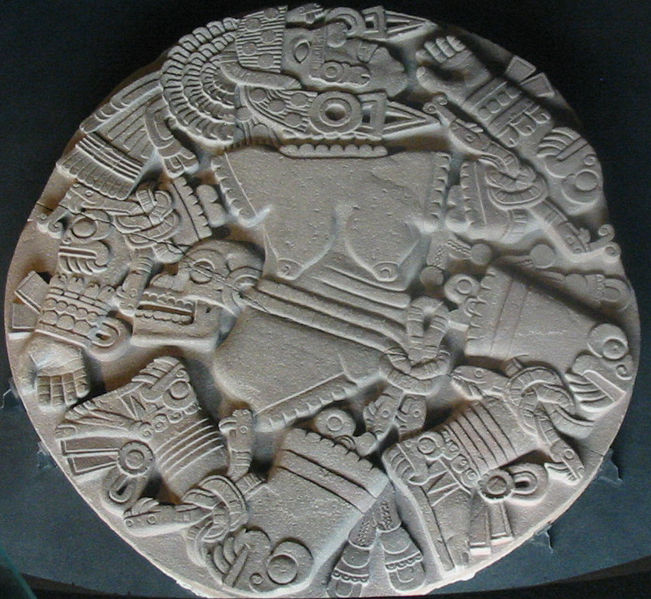
3.25m diameter relief of Coyolxauhqui, the Aztec moon goddess, dating to the end of the 15th century. It’s amazing that something like this could lay undiscovered for so long!
For the next four years, serious archeological activity went on at the site, uncovering the temple grounds themselves, measured at around 4,000 square meters and centered on the high temple itself with a platform size of 80m x 100m. Thousands of artifacts were also found and are now housed in the Templo Mayor museum, located on the temple grounds. Conservation and excavation activity is ongoing.
Stop #2: Templo Mayor & the Museo de Templo Mayor
Admission to Templo Mayor grounds and museum (inclusive) was 57 Pesos in October 2012, not including the optional audio guide. Admission is free to students, teachers, children under 13, senior citizens, and is free to all on Sundays.
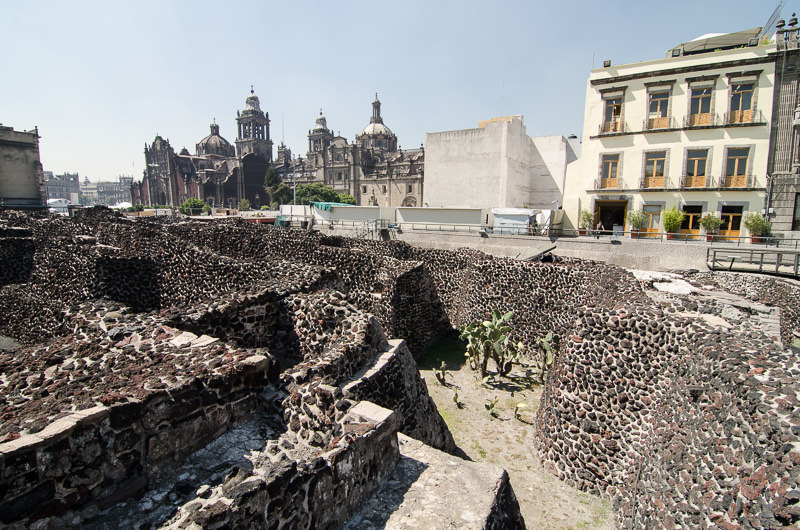
Exterior ruins of Templo Mayor.
The exterior ruins of the site is quite interesting (but quite difficult to photograph in an interesting way, especially in harsh midday sun), but the museum itself is fantastic. The space is well organized for the visitor, and the exhibits artfully lit, making for a really enjoyable experience. Don’t skip the museum, it’s a highlight.
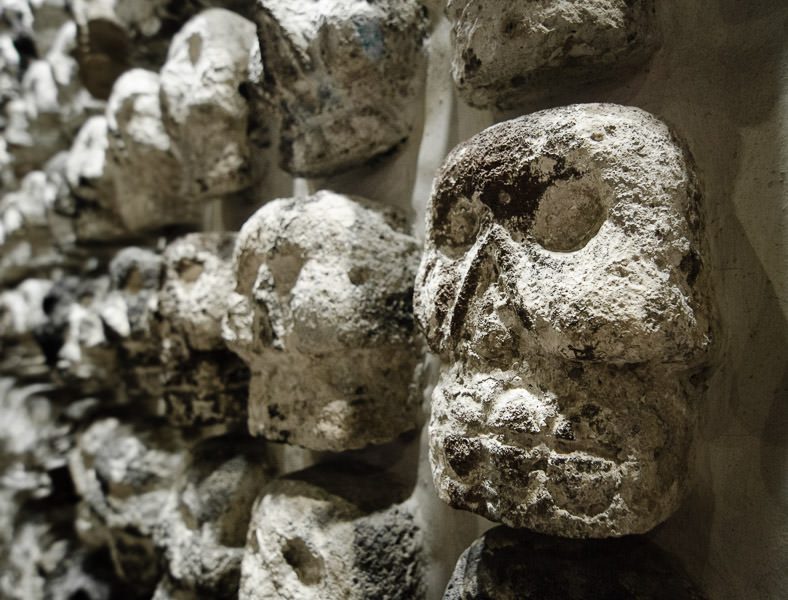
A wall of stone skulls inside the museum.
If you get the feeling that Aztec art is a bit death-obsessed, your feeling is correct. Before settling in cities like Tenochtitlan, the Mexica/Aztec were nomadic warriors, and strong themes of this warlike culture comes through in their art. Comparatively, Mayan art appears a bit more mystical, more complex in themes.
On the square between Templo Mayor and the Zócalo, you’ll find street performers engaging in what are purported to be “ancient Aztec rituals” involving dance, music and blessings with herbs and incense. Rumor has it that these performances have little if any basis in real Aztec traditions. Probably about as authentic as the unlicensed (and at the time of writing, wanted) Spidermen on Hollywood Boulevard.
After Templo Mayor, I still had much touristing to do, so I ate lunch quickly, on the street. About 30 Pesos got me three tacos and a Coca-Cola.
Stop #3: Mexico City Metropolitan Cathedral
Catedral Metropolitana de la Asunción de María is free to enter, and it’s massive (110m x 54.5m), quite old (construction began in 1573), important (it’s the home of the Catholic Archdiocese of Mexico) and ornate. But I didn’t and don’t really care about such things – the most interesting things about Catedral Metropolitana de la Asunción de María to me, are:
- The fact that this gargantuan Catholic edifice was built from the stones of an Aztec high temple (as previously stated).
- The strange idea that this huge, heavy building, like many others in DF, is in danger of sinking into the spongy, unreliable soil of Mexico City. Structural reinforcement took place in the 1990s and the building was removed from the “endangered building” list in the year 2000. Knowing this gives the place a sense of urgency, in my opinion, as it may not last forever!
As for related relics, patron saints, religious services – I’ll leave those to someone else to admire/discuss. The reason I entered this church was for the view of the Zócalo from above. Short guided tours, conducted in Spanish, take you to the roof and bell towers of the Cathedral. Note: A considerably higher viewpoint of DF can be had from Torre Latinoamericana‘s 44th floor observation deck for a fee of something like 60 Pesos.
I was the only non-Spanish speaker on my tour, but the guide was kind enough to whisper bits of broken English information about the bells and related towers between her bigger job of educating the Mexican majority. Bullet points: there are 25 bells in the cathedral’s towers, the largest weighing in at 13,000 kg.
Couples on the tour spent most of their time kissing on the roofs of the buildings instead of marveling at bells. There’s a lot of this type of unabashed public affection going on throughout Mexico City, and I’m all for it. Enjoy yourselves, people!
Stop #4: Palacio Nacional
The front of the Palacio Nacional is over 200m long, and covers the entire east side of the Zócalo. Can’t miss it – though the tourist entrance almost looks like a place you’re not supposed to enter. There were no directional signs to invite one in, and two guards were standing out front – kind of a weird setup. After failed attempts to enter the grounds from the north and south (I walked around the entirety of the building like an idiot, to be honest), I finally approached from the Zócalo side and was admitted (free).
Today, the Palacio Nacional is the seat of Mexican federal power, currently housing working offices of the Federal Treasury, Finance Ministry and National Archives. The fountains and arcaded courtyards are distinctly of Spanish style, but like the Cathedral, these buildings are built of Aztec stones from what was Aztec ruler Moctezuma II’s palace complex. Mixed history, mixed media.
The primary reason tourists visit the Palacio Nacional is to see Diego Rivera’s massive mural “The Epic of the Mexican People” which depicts Mexican history from 1521 to 1930. Eleven additional Rivera murals can be seen on the middle floor of the main patio.
A highlight of my visit: a free public art gallery can be accessed on the middle floor, near Rivera’s mural. I found the collection here quite well curated with a playful balance of media, subject and color and ended up staying longer than I would have expected. Only paintings are shown below, but interesting and pleasing sculpture was also featured in the exhibit.
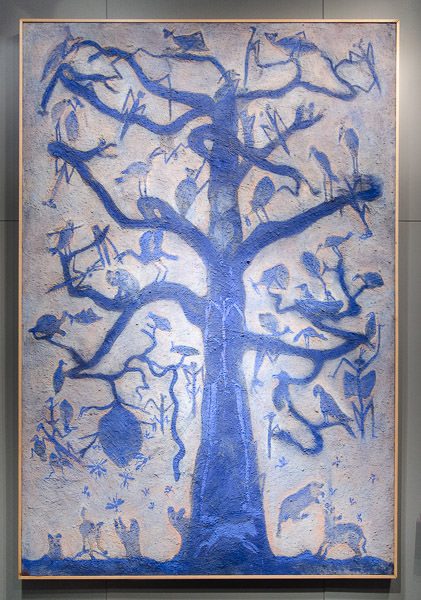
El Arbol de los Insectos by Sergio Hernandez. (no rights claimed whatsoever on this or any pictured artwork – just expressing appreciation!)
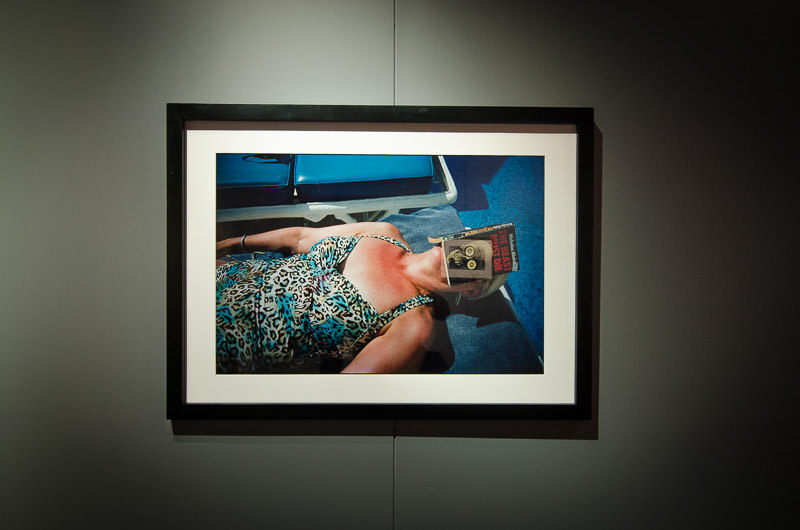
Bestseller (The Beast Must Die) by Miguel Calderon.
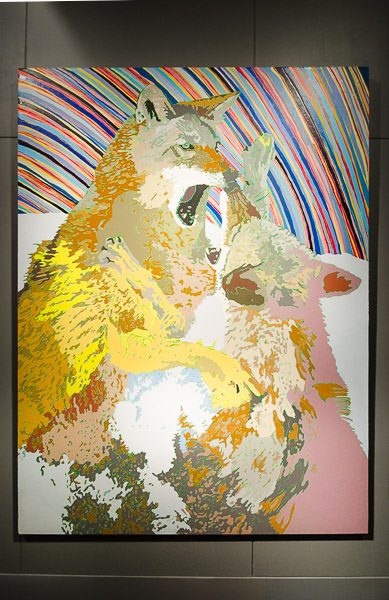
Lobos by Fernanda Brunet.
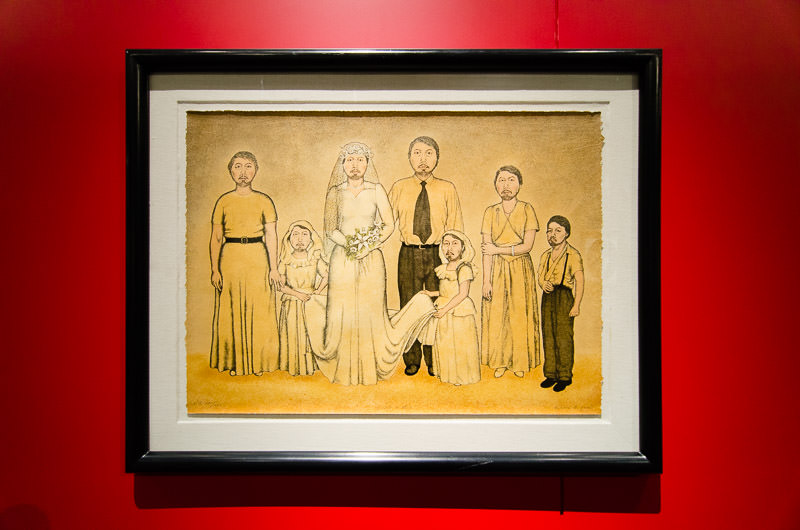
Retrato de Boda by Nahum B. Zenil.
Stops #5 and #6: Torre Latinoamericana & Palacio de Bellas Artes (to be fair, I didn’t make it into either!)
From the Palacio Nacional, I walked westward, toward the Torre Latinoamerica and the Palacio de Bellas Artes. By this point it was a bit late in the day, so I skipped over the Torre Latinoamerica, and headed toward the Palacio de Bellas Artes. Bellas Artes was unfortunately closed by the time I arrived, so I proceeded onward to my next stop, Plaza Garibaldi.
A few photos from my walk:
Stop #7: Plaza Garibaldi
About six blocks north of Bellas Artes is a not-to-be-missed living cultural institution of Mexico DF – Plaza Garibaldi, where mariachi, norteños and jarocho gather every day to play, and where, for negotiable prices, you can solicit a band of minstrels to play your favorite romantic or tragic song, or maybe even one that’s both romantic AND tragic. Garibaldi is quite a scene on weekends and weekdays alike – a random Tuesday or Thursday still yields a good turnout, though weekends are even busier.
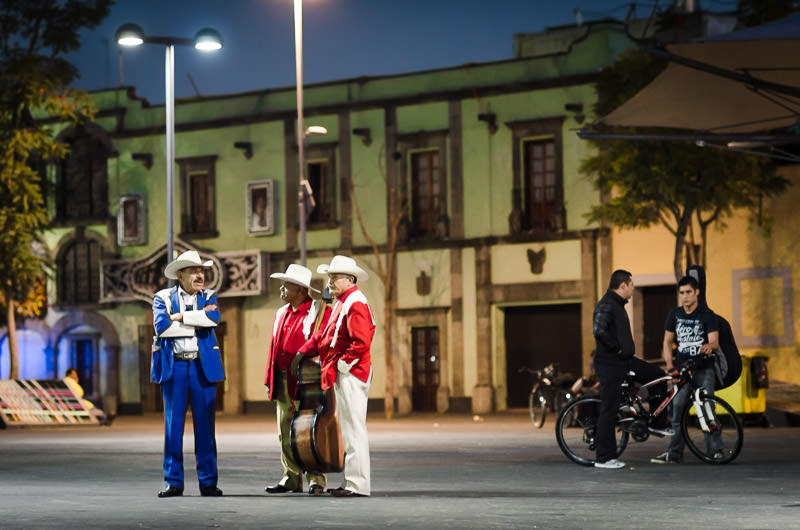
Musicians assembling at Plaza Garibaldi early in the evening.
A loquacious band leader approached me and offered to gather his guys to play me a song, and I couldn’t turn him down. They played me something that was “very romantic” according to him, though I couldn’t have told you – my Spanish is still elementary enough that he could have been signing about something else entirely.
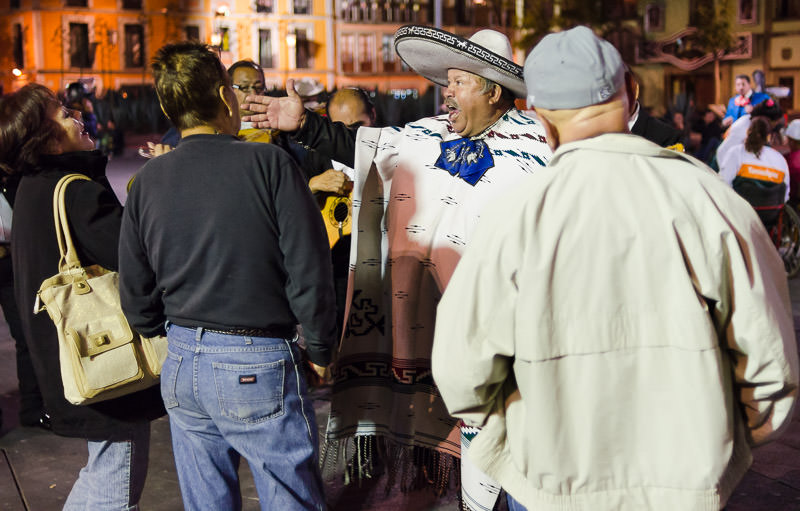
Power and emotion.
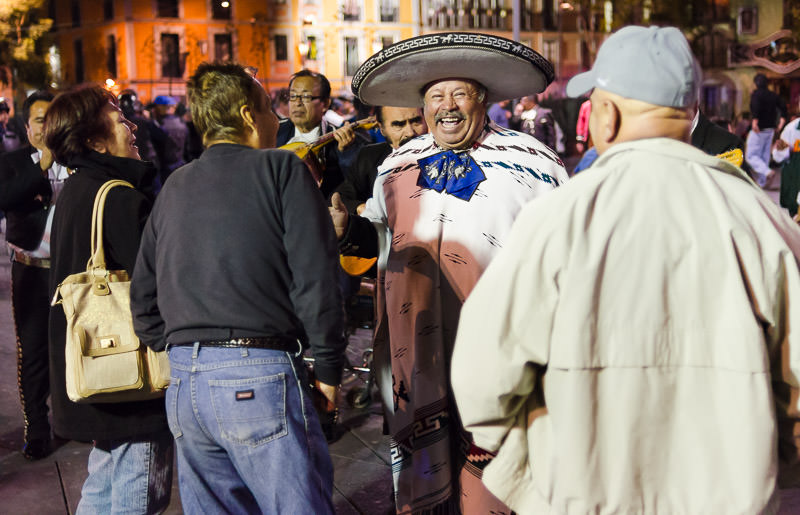
But not without a smile.
Garibaldi isn’t quite an all-ages destination just yet – the square has a rough image and a history of public drunkenness, fighting and robbery. Mexico City police have a heavy presence on Garibaldi proper to mitigate nasty behavior, but it’s still a place known as much for its bad reputation as for its music. Exercise caution here – avoid flashing cash or valuables, and know your onward transit method for when you decide to leave – including knowing what time the metro stops running if that’s part of your exit plan. The areas surrounding Garibaldi aren’t great places to get lost in after a few shots of mezcal.
Stop #8: Dinner at Hosteria de Santo Domingo.
I closed my day out Hostería de Santo Domingo, which my Lonely Planet Mexico guide noted as “the oldest restaurant in Mexico City.” I ordered one of the specials of the house – chile en nogada, and despite being incredibly hungry from the long day, still barely finished the monstrous, rich dish.
Chile en nogada, a dish from the nearby city of Puebla, consists of a poblano chile stuffed with shredded meat, covered in a walnut-based cream sauce and topped with pomegranate seeds and a sprig of parsley – this gives all the colors of the Mexican flag (white, red and green).

Chile en nogada.
The service at Hostería de Santo Domingo was pleasant and professional, and dinner entertainment was provided by a man on a slightly out-of-tune piano and a woman singing along. This place has character. Prices are a little higher than I experienced at other eateries in DF, but costs weren’t runaways either.
A noisy DIY construction project changed the atmosphere from goofily pleasant and relaxed to confusingly caustic. For some reason, workers decided to begin breaking concrete, just a stone’s throw away from the dining room during business hours. The service staff still wanted to maintain a professional appearance regardless, so they held a white tablecloth taut in front of the workers to block the visual. The jarring ring of hammer on concrete didn’t respect its cloth barricade.
Time to go home. I walked back to the Zócalo on quiet night streets (keeping to well lit areas) and headed for the metro for return transit to my lodgings in the La Condesa neighborhood.
What are your favorite things you’ve seen in the Centro Historico? Post below and let us know. Thanks for reading!

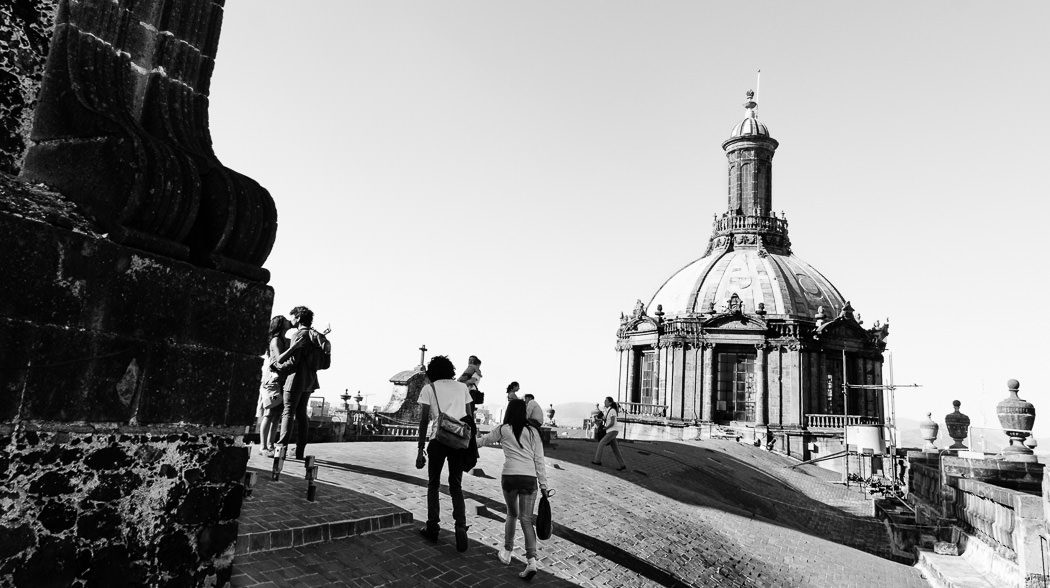
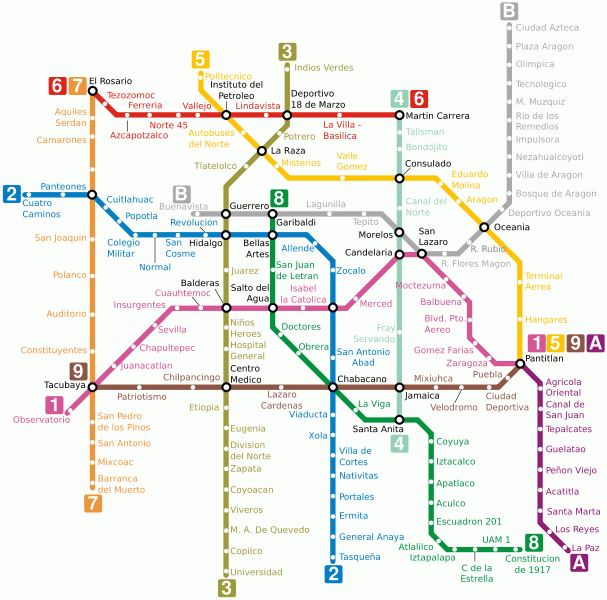
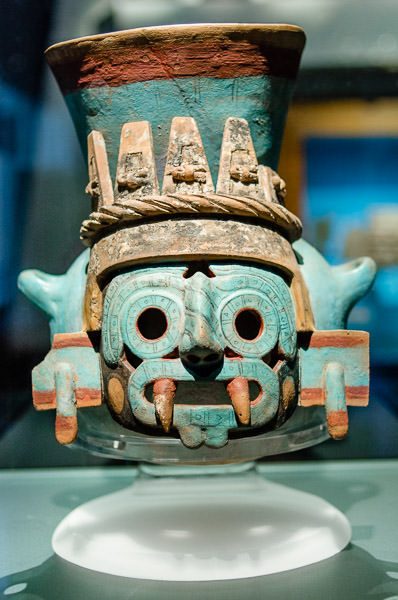
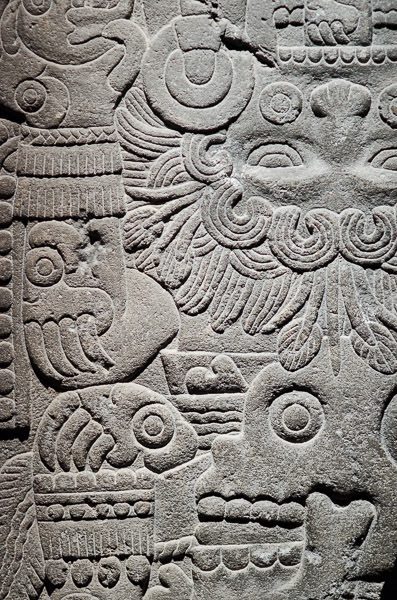
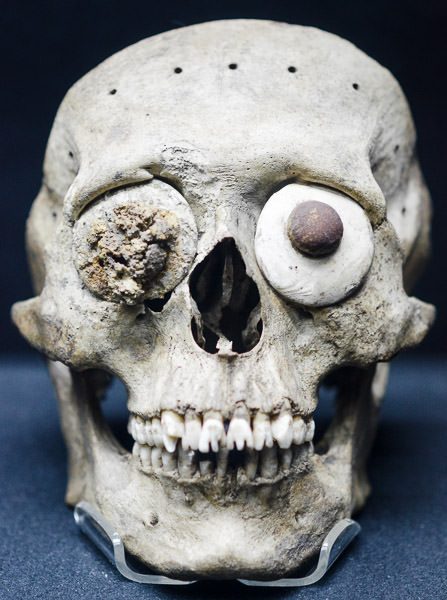
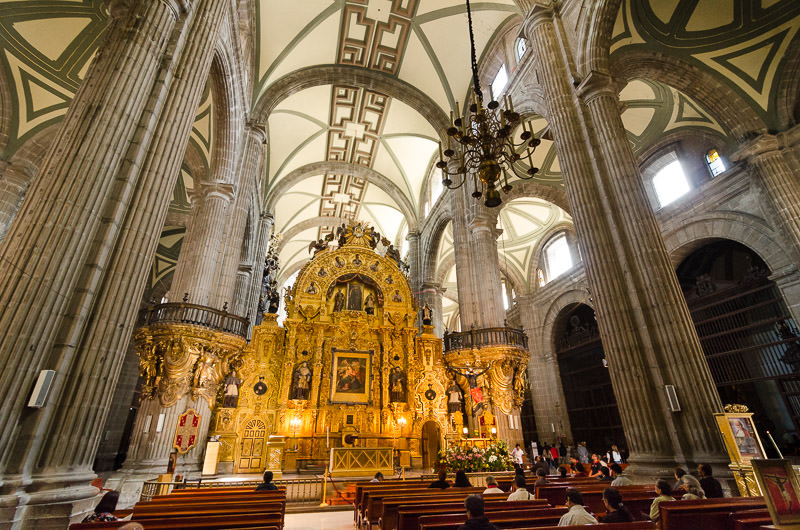
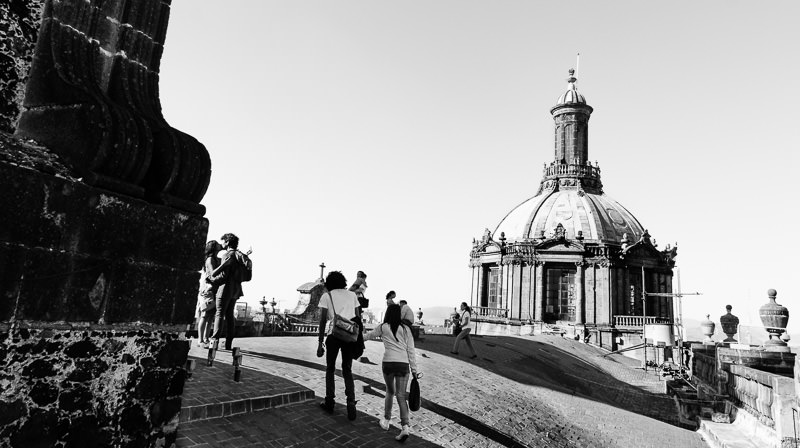
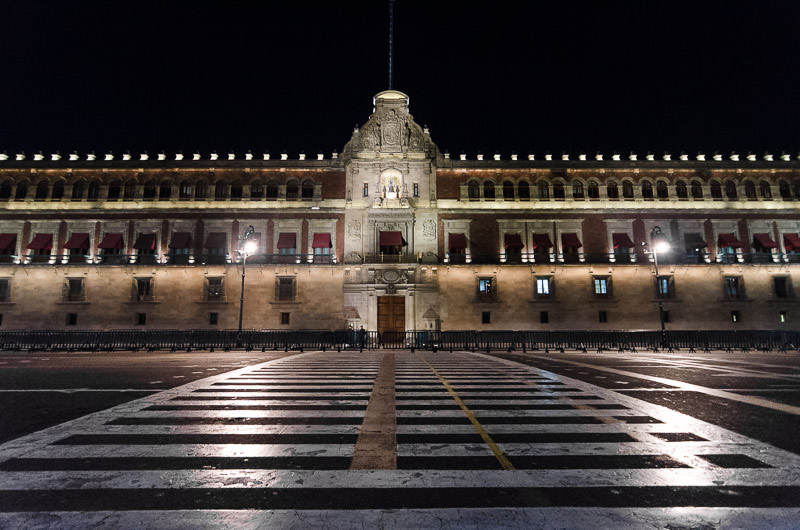
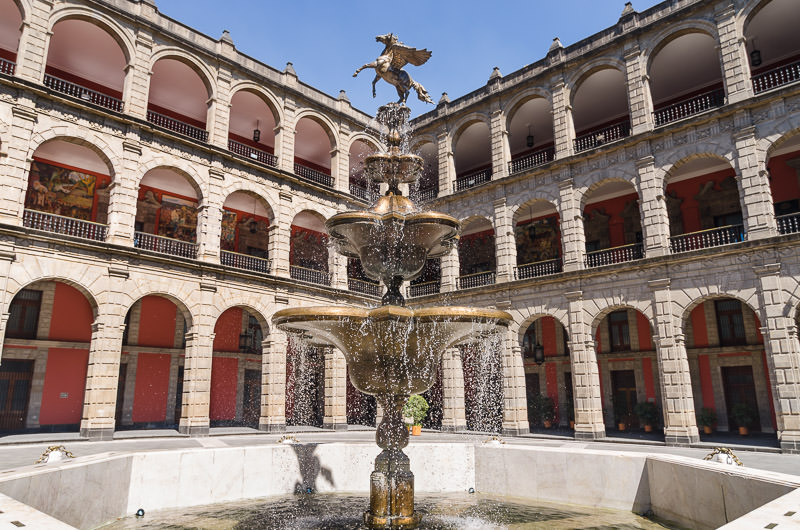
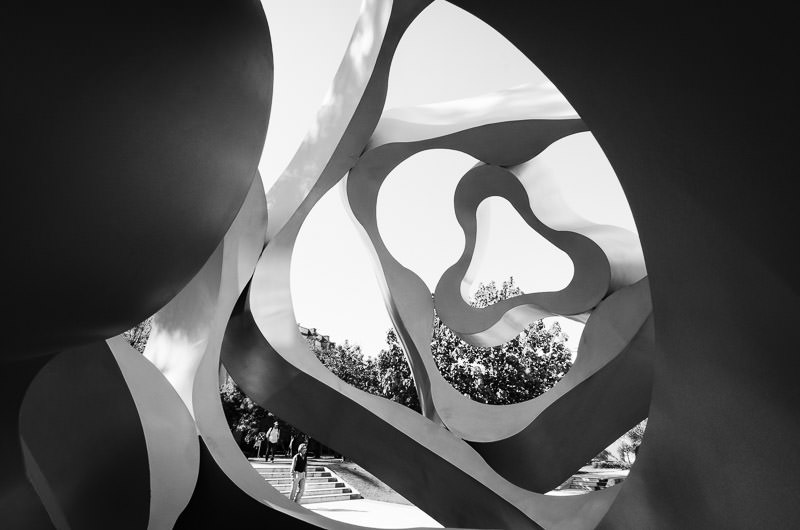
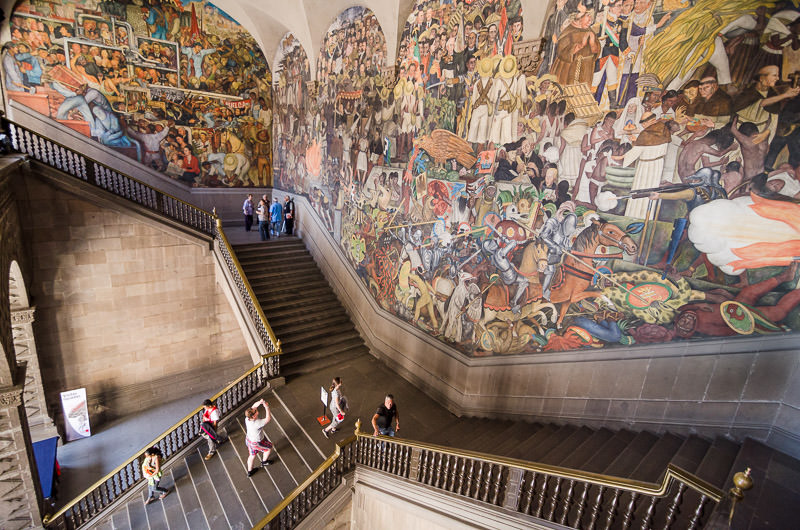
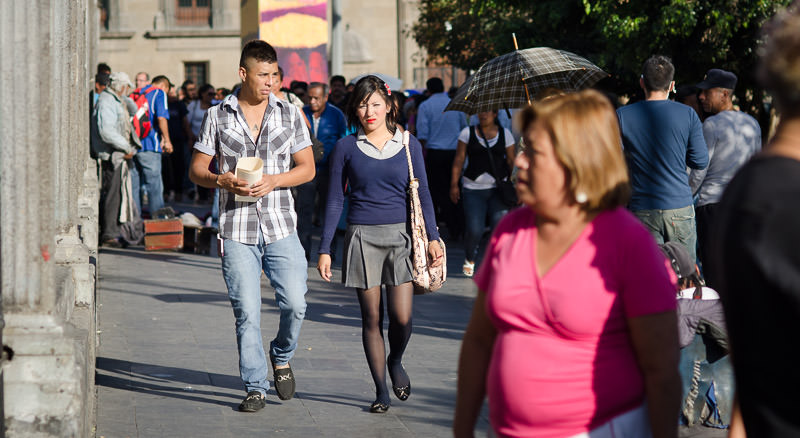
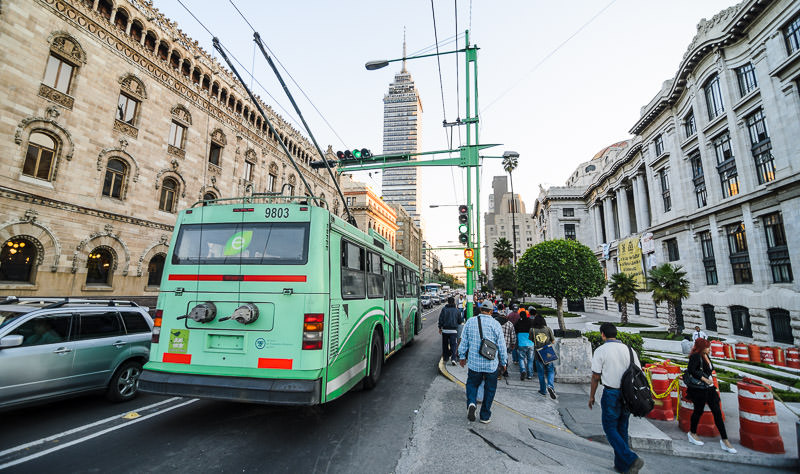
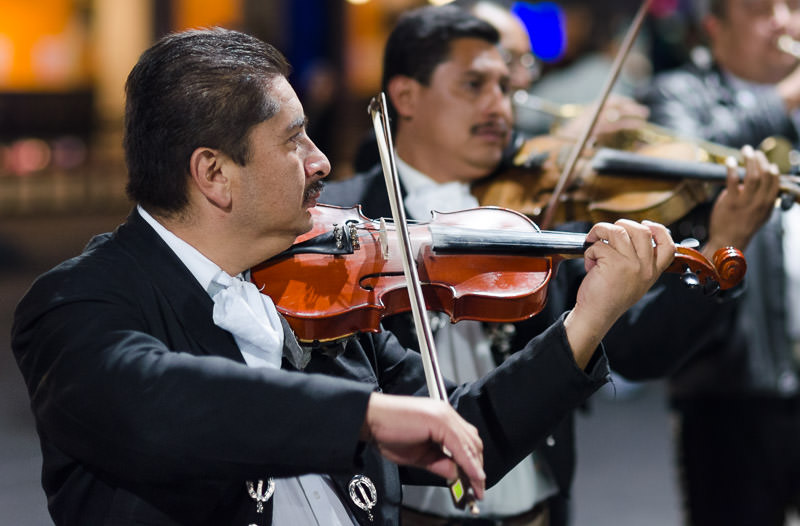
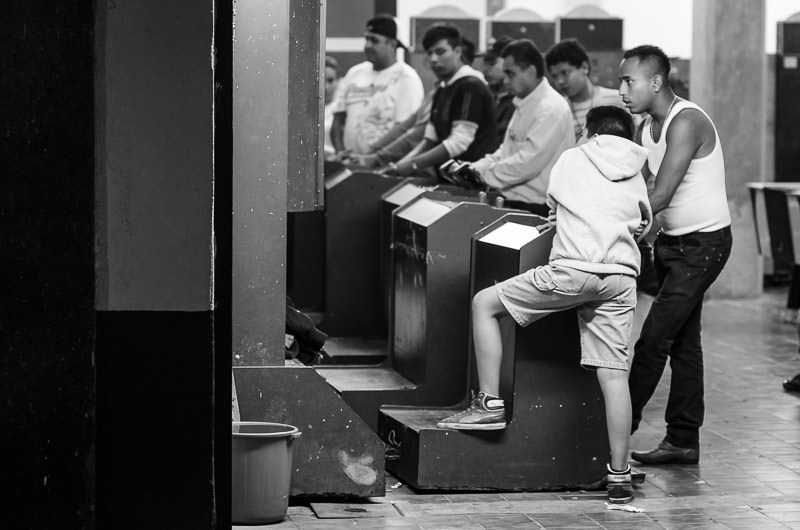
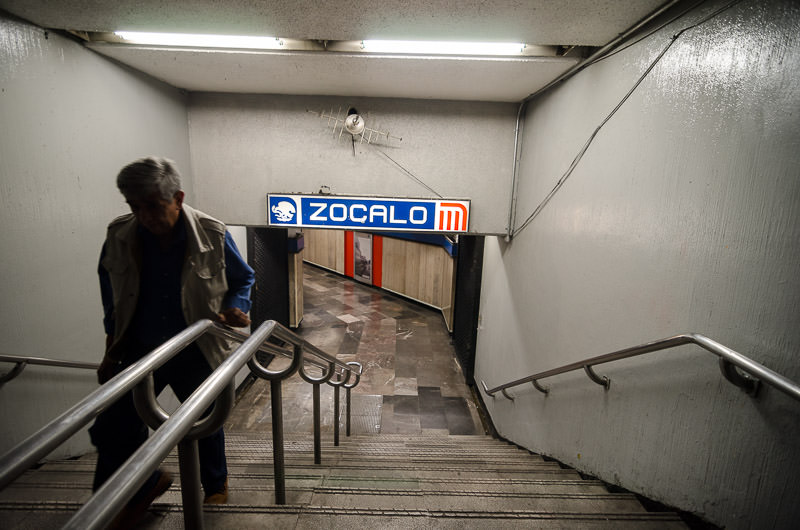

That’s a packed day in DF! This place is such a beast of a city to get around sometimes, but you definitely got some of the best bits in there! Especially garibaldi 🙂
No doubt. I found that there was more to do in DF than I could cover even in a week, which is way better than most capitol cities I’ve encountered. Thanks for reading.
Great commentary and photos! Best yet!